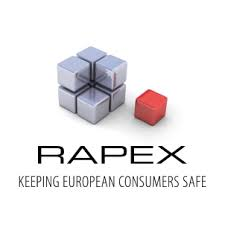Informazione tecnica HSE / 25 ° anno
/ Documenti disponibili:
45.707
/ Documenti scaricati: 34.779.868
/ Documenti scaricati: 34.779.868

30.5.2018 Commission Staff Working Document
SWD(2018) 266 final
Evaluation of the Aerosol Dispensers Directive (75/324/EEC)
The Council Directive of 20 May 1975 on the approximation of the laws of the Member States relating to aerosol dispensers, commonly known as the Aerosol Dispensers Directive or ADD (Directive 75/324/EEC), is one of the oldest product safety directives still in force in the EU. It aims to ensure the safety of aerosol dispensers in the EU and secure their free movement on the internal market.
Since its entry into force in 1975, the Directive has not been subject to a formal evaluation.
It has been amended several times to keep up with the technical developments on the market, but the essence and structure have stayed the same. Stakeholders (industry, consumers, Member States and the Commission) have not encountered major problems related to the functioning of the Directive. In the context of further requests to adapt the Directive to technical progress in 2014, the question was raised by national authorities whether the Directive was still adequate in its current format and whether it should not be modernised to bring it in line with the New Legislative Framework, like other EU product safety legislation. Therefore, this opportunity was taken to evaluate the performance of the Directive.
The evaluation assesses the extent to which the Directive meets its objectives by examining each of the following five criteria: effectiveness, efficiency, relevance, coherence and EU added value.
The evaluation analyses the overall performance of the Directive in the period 2005 to 2015 and covers all Member States. Going back further in the past would not provide much information about the current state of implementation of the Directive. Nevertheless comparison with the market situation prior to the harmonisation of the legislation in 1975 was taken into consideration in the analysis.
The results of the evaluation will provide, where appropriate, input for further policy decisions with regard to aerosol dispensers in the EU, e.g. in particular the need for a revision or a partial adaptation to technical progress of the Directive.
The evaluation does not cover aspects governed by other legislation applying to aerosol dispensers (such as for example legislation related to chemicals, transport, packaging, cosmetics, pharmaceuticals, foodstuff or environmental aspects).
________________
Table of contents
1. INTRODUCTION
1.1 Purpose of the evaluation
1.2 Scope of the evaluation
2. BACKGROUND TO THE INTERVENTION
2.1 Description of the intervention
2.2 Baseline scenario and point of comparison
3. IMPLEMENTATION / STATE OF PLAY
3.1 Description of the market
3.2 Implementation of the legislation
4. METHOD
4.1 Short description of methodology
4.2 Limitations and robustness of findings
5. ANALYSIS AND ANSWERS TO THE EVALUATION QUESTIONS
5.1 Relevance
5.1.1 Relevance in the light of current needs
5.1.2 Relevance in the light of technological developments
5.1.3 Ability to foster or support innovation
5.1.4 Alignment with the New Legislative Framework
5.2 Effectiveness
5.2.1 Contribution to product safety
5.2.2 Contribution to the internal market
5.2.4 Role of the provisions and requirements set out in the Directive on its effectiveness
5.2.5 Barriers to the effective application
5.3 Efficiency
5.4 Coherence
5.5 EU Added value
6. CONCLUSIONS
ANNEX 1: PROCEDURAL INFORMATION
ANNEX 2: SYNOPSIS REPORT OF THE STAKEHOLDER CONSULTATION
ANNEX 3. EVALUATION QUESTIONS
ANNEX 4. OVERVIEW OF COSTS- BENEFITS IDENTIFIED IN THE EVALUATION
Fonte: Commissione Europea
Collegati:

Il regolamento proposto non modifica il campo di applicazione della direttiva 2009/142/CE ma ne modifica alcune d...

Report 17 del 28/04/2017 N.40 A11/0071/17 Paesi Bassi
Approfondimento tecnico: Trampolino giocattolo
Il prodotto, di marca EXIT, modello Bounzy, ...

Report 04 del 26/01/2024 N. 01 A11/00016/24 Malta
Approfondimento tecnico: Cavo elettrico
Il prodotto, di marca Pappalardo Cavi, mod. FS17, ...
Testata editoriale iscritta al n. 22/2024 del registro periodici della cancelleria del Tribunale di Perugia in data 19.11.2024